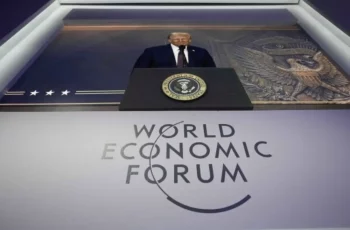
On April 22, 2025, in the Indian-administered part of Kashmir, unidentified people who emerged from the forest in the vicinity of the city of Pahalgam shot a group of civilians, including tourists, with machine guns. According to estimates by the Indian side, 27 people were killed and dozens more injured. A little-known group, the Kashmiri Resistance Front (TRF), claimed responsibility for the attack.

New Delhi, however, accused Pakistan of the attack and immediately retaliated by expelling Pakistani diplomats, closing the main land border (the only land checkpoint Wagah operates between Lahore and Amritsar) and canceling visas for all Pakistani citizens. In addition, The Indus Waters Treaty was suspended, which obliges the parties not to limit river flows – the Indus, Jhelum, Ravi and Chenab flow into Pakistan from India. In addition, India has deployed counter-terrorism measures in the Kashmir Valley and along the line of control.
Pakistan, for its part, stated that such accusations are unfounded and violate bilateral agreements, as well as UN Security Council resolutions, similarly declared Indian military advisers in Pakistan persona non grata, cancelled visas for Indian citizens, put the armed forces on alert, closed the airspace for Indian aircraft and completely stopped economic cooperation, including contacts. through third countries. The office of the Prime Minister of Pakistan also issued a statement that if India restricts the water flows to Pakistan, it will be considered as military action and any means available to the state can be used in response. And the Pakistani stock exchange saw a sharp drop in its value due to the incident.

The escalation is evident, although its real causes are clearly politicized by the Indian side, since Pakistan has also been suffering from the actions of various extremist and separatist groups for many years, and the annual number of victims in Pakistan itself is significantly higher than in India. But mutual accusations and the appointment of the secret services of the opposing country as guilty are commonplace, since the two states have been at war since the very beginning of independence from Britain in 1947.
Putting aside historical claims, the most pressing question will be how India, which is much stronger than Pakistan economically and militarily, will behave. But since Pakistan possesses nuclear weapons, there is a risk of further escalation. It is no coincidence that, year after year, Western experts have referred to Kashmir as a potential hotbed of regional war.
Assuming that New Delhi will act according to the logic of previous precedents, India may well launch a limited retaliatory strike. The only question is where and for whom. In February 2019, the last major terrorist attack was in Pulwama in southern Kashmir, when a suicide bomber drove a car up to a police convoy and detonated an explosive device. More than forty people were killed. At that time, the Pakistan-based Jaish-e-Mohammed. group claimed responsibility for the attack. And India has attacked the territory of Azad Kashmir (AJK), a nominally independent quasi-state, but under the protection of Islamabad. According to the ironic comment of the Pakistani side, then “the trees were damaged” by this strike. Although, according to India, precise weapons were used to attack the terrorist training camp, there were no casualties on the other side of the Line of Control.
As for the Indian-administered territory of Kashmir (in addition to the Pakistani part, another historical part of this former principality is under the control of China, an ally of Pakistan), a special status has been revoked there since 2019, which led to the loss of some of its rights by its indigenous inhabitants.
As an act of revenge for the revocation, which led to a change in the demographic balance, the Kashmiri Resistance Front (TRF) called its campaign. And, probably, the dissatisfied will continue to try to somehow resist the pressure of New Delhi.

Although in this case there are interesting nuances that are worth paying attention to. Firstly, the Indian part of Kashmir is one of the most militarized zones in the world, with 700,000 Indian military, police and security personnel stationed on its territory. If they managed to footle away this terrorist attack, then this is a serious failure, and in addition to the repressive measures promised by Prime Minister Narendra Modi, some cabinet reshuffles should follow. Secondly, the terrorist attack occurred during the visit of US Vice President JD Vance, who publicly called on India to buy more American weapons. In Pakistan itself, they fear that the terrorist attack was nothing more than a false flag operation in order to carry out some radical measures, like those that Israel did in the Gaza Strip. The narrative of “Islamic fundamentalism,” taking into account the historical US war on terrorism and the current position of the White House, could contribute to this. And India could benefit not only from the diplomatic solidarity of the United States and Israel, but also from their military assistance.
On April 24, a military transport aircraft took off from the US Air Force base in Doha for India, which Pakistan also regarded as part of some kind of secret plan directed against Pakistan, and possibly China. It should also be noted that now the military leadership in Pakistan is closely linked to the British lobby, which is quite critical of the administration of Donald Trump.
Meanwhile, the discourse about “Islamic terrorism”, which, according to New Delhi, is sponsored by Pakistan, clearly does not correspond to reality in India.
Other than the long-standing problem in Kashmir itself, India has other critical points. One of them is Punjab, where some Sikhs are interested in creating an independent state of Khalistan. The other is the central and eastern parts of India, where the so-called Naxalite belt (known as the “Red Corridor”) stretches from south to north, where armed groups of Maoists operate, against which the government is fighting. And while a counter-terrorism operation is underway in Jammu and Kashmir, a similar one is underway in another part against the Naxalites. And according to official data, in the Bastar region of the small central state of Chhattisgarh alone, 1,623 civilians were killed by Maoists between 2021 to 2024, and another 228 were killed by explosive devices, while 1,292 security personnel were killed in several incidents of encounter, ambush and IED blasts.
Based on these data alone, it can be concluded that there were much fewer violent deaths in Kashmir.
And at least India does not officially accuse China or any other countries with leftist governments of supporting these groups.
Presumably, the historical memory of the first (1947-1949) and second (1965) Indo—Pakistani wars over Kashmir, as well as the Kargil War (1999), causes the Indian leadership to overreact. And, taking advantage of its status and position, including through cooperation with Russia, and being a member of the BRICS and SCO, India will use such incidents to its geopolitical interests.










Comments